ASUS NUC14RVHv7 and ASRock Industrial NUC BOX-155H Review: Meteor Lake Brings Accelerated AI to UCFF PCs
by Ganesh T S on May 23, 2024 8:00 AM EST- Posted in
- Systems
- Intel
- Asus
- NUC
- UCFF
- Mini-PC
- ASRock Industrial
- Meteor Lake
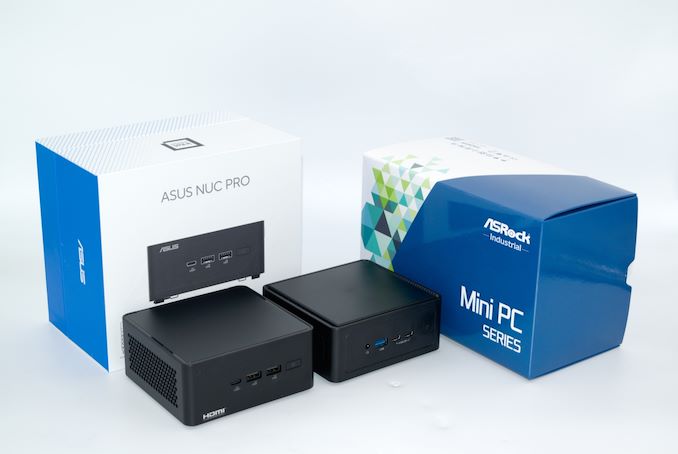
Intel's Meteor Lake series of processors has had a drawn-out launch since its details were officially revealed in September 2023. The series marks Intel's foray into the consumer market with a tile-based chiplet configuration held together with Foveros packaging. Similar to Tiger Lake, the focus of Meteor Lake has primarily been on the mobile market - ultraportables and notebooks. However, this has not prevented Intel and its partners from introducing it as a follow-up to Raptor Lake-P and Raptor Lake-H in the SFF / UCFF desktop market.
ASRock Industrial has consistently been the first to market with ultra-compact form-factor motherboards and mini-PCs, with product announcements often coinciding with Intel's launch of its latest and greatest mobile processors. Meteor Lake has not been any different, with the NUC(S) Ultra 100 BOX series launching towards the end of Q4 2023. In the meanwhile, Intel's NUC business was taken over by ASUS. ASUS's first major product announcement after the acquisition came in the form of the Meteor Lake-based Revel Canyon NUCs at the 2024 CES.
The flagship NUC Ultra 100 BOX system is the NUC BOX-155H based on the Intel Core Ultra 7 155H. The Revel Canyon NUC lineup includes a model based on the Core Ultra 7 165H with vPro capabilities, with its claim to fame being the ability to hit 5 GHz on the performance cores. This review takes a detailed look at the features and performance profile of the ASRock Industrial NUC BOX-155H and the ASUS NUC14RVHv7. The analysis also helps in establishing the potential and benefits of Meteor Lake for the UCFF desktop market over its predecessors and the competition.
Introduction and Product Impressions
The last decade has seen significant strides in processor performance as well as power efficiency. Coupled with advancements in thermal solutions, we have seen compact systems with low-power SoCs becoming capable of replacing bulky desktops for many use-cases. This trend gained mainstream attention with Intel's introduction of the ultra-compact form-factor (4in. x 4in.) NUC in the early 2010s.
The 4x4 form-factor continues to hold sway even today, as evidenced by the variety of UCFF systems introduced by multiple vendors every year. Both the ASRock Industrial NUC BOX-155H and the ASUS NUC14RVHv7 we are looking at in this review utilize the tried and tested 4x4 form-factor.
ASRock Industrial NUC BOX-155H
ASRock Industrial has been serving the industrial systems market with compact boards and mini-PCs since the days of Intel Skylake (6th Gen) / Braswell. Having taken over ASRock's Beebox design, the company's product releases in this category have had a regular cadence.
The company has been regularly iterating on the original design and making improvements over the years. The glossy fingerprint-magnet of a chassis was finally replaced with a matte top in the Raptor Lake generation. This year, we are seeing a revamp of the internals to accommodate a thermal solution capable of handling the heat generated by Gen4 SSDs operating at full speeds. The NUC BOX-155H being looked at today is the tall version with support for a 2.5" SATA drive.
In addition to the main unit, the NUC BOX-155H package comes with a VESA mount and corresponding screws, M.2 mounts and screws, a combined SATA data and power cable compatible with the SATA port on the internal board, an user manual, and a 120W AC adapter (19V @ 6.32A) coupled with a geo-specific power cord. The gallery below provides a comprehensive look at the chassis design and I/O ports placement, as well as the layout of the internal board.
Our review sample from ASRock Industrial was a barebones system. We opted to install 2x 16GB Crucial DDR5-5600 SODIMMs and a 2TB Samsung SSD 990 PRO SSD.
Access to the SSD and SODIMM slots is obtained by removing four screws from the underside of the system. The mount for the 2.5" drive is also attached to the underside, as shown in the picture below. One of the key updates in this iteration of the chassis design is the presence of a thick metal blocks with affixed thermal pads attached to the metal mount. These pads make close contact with the installed SSDs and SODIMMs. Care must be taken by the end user to remove the plastic film covering the thermal pads after the corresponding components are installed.
The addition of this thermal solution should ostensibly lead to cooler DRAM and SSD temperatures under stress. This is one of the aspects evaluated further down in this review. The wires from the WLAN / BT card under the M.2 2280 slot get affixed to the chassis on the other side. Not seen in the above picture, but included in the gallery, is the notebook-style cooler that acts as the thermal solution for the MTL-H processor.
ASUS NUC14RVHv7
Since its introduction in the early 2010s, the NUC lineup has acted as a reference design for the 4x4 form-factor in each processor generation. The Revel Canyon NUC continues this tradition. Externally, there is not much difference between the new units and the Raptor Lake-P-based Arena Canyon NUCs. The NUC14RVHv7 being looked at today is the tall version with support for a 2.5" SATA drive.
In addition to the main unit, the NUC14RVHv7 package comes with a VESA mount and corresponding screws, a screw configuration to lock in the power cord, user manuals and safety information, along with a 120W (19V @ 6.32A) AC adapter. Our review sample from ASUS came with 2x 8GB SK hynix DDR5-5600 SODIMMs and a 512GB Samsung PM9A1a SSD pre-installed.
One of the key improvements made in the Revel Canyon NUC over the Arena Canyon NUC is the move to a completely tool-less operation for the components installation. A sliding mechanism holds the bottom of the chassis in place. The slider can also be locked with a twist, if needed. Pulling out the metal underside reveals a receptacle for a 2.5" drive. This also incorporates a copper block with thermal pads, as shown in the picture below.
The SATA ribbon cable with both power and data is pre-installed in the system. The M.2 SSDs are locked in place with the help of a rubber peg / screw holder system that doesn't require any tools to mount / dismount the drive.
Review System Specifications
Evaluation of SFF / UCFF systems is performed with the BIOS settings at default. However, ASRock Industrial has always recommended us to present results from both the default (CPU Performance set to Normal Mode) as well as a tweaked configuration (CPU Performance set to Performance Mode). The difference between the two settings relates to the power limits configuration for the processor. By default, it is set to 28W, while the performance mode increases it to 40W.
One of the key differences between the BIOS features of the Arena Canyon NUC and the Revel Canyon NUC is the adoption of a dynamic PL1 configuration as the default. Based on the minimal help text, this seems similar to the skin-temperature aware power management (STAPM) scheme used in recent AMD systems. Tools running in the OS detect the PL1 setting as 64W for the ASUS NUC14RVHv7, but the BIOS actually configures it to be dynamic.
The full specifications of the review samples are provided in the table below.
| Systems Specifications (as tested) |
||
| ASUS NUC14RVHv7 (Revel Canyon vPro) | ASRock NUC BOX-155H (Performance) | |
| Processor | Intel Core Ultra 7 165H Meteor Lake-H 6P + 8E + 2LPE / 22T, up to 5.0 GHz (P) up to 3.8 GHz (E) up to 2.5 GHz (LPE) Intel 4 (CPU) / TSMC N5 (iGPU), 24MB L2, Min / Max / Base TDP: 20W / 115W / 28W PL1 = 64W, PL2 = 64W |
Intel Core Ultra 7 155H Meteor Lake-H 6P + 8E + 2LPE / 22T, up to 4.8 GHz (P) up to 3.8 GHz (E) up to 2.5 GHz (LPE) Intel 4 (CPU) / TSMC N5 (iGPU), 24MB L2, Min / Max / Base TDP: 20W / 115W / 28W PL1 = 40W, PL2 = 64W |
| Memory | SK hynix HMCG66AGBSA095N DDR5-5600 SODIMM 46-45-45-90 @ 5600 MHz 2x8 GB |
Crucial CT16G56C46S5.M8G1 DDR5-5600 SODIMM 46-45-45-90 @ 5600 MHz 2x16 GB |
| Graphics | Intel Arc Graphics (8 Xe-cores @ up to 2.3 GHz) |
Intel Arc Graphics (8 Xe-cores @ up to 2.25 GHz) |
| Disk Drive(s) | Samsung PM9A1a MZVL2512HDJD (512 GB; M.2 2280 PCIe 4.0 x4 NVMe;) (Samsung 7th Gen. V-NAND 176L (136T) 3D TLC; Samsung Pascal S4LV008 Controller) |
Samsung SSD 990 PRO MZ-VP92T0B (2 TB; M.2 2280 PCIe 4.0 x4 NVMe;) (Samsung 7th Gen. V-NAND 176L (136T) 3D TLC; Samsung Pascal S4LV008 Controller) |
| Networking | 1x 2.5 GbE RJ-45 (Intel I226-LM) Intel Wi-Fi 6E AX211 (2x2 802.11ax - 2.4 Gbps) |
1x 2.5 GbE RJ-45 (Intel I226-LM) 1x 2.5 GbE RJ-45 (Intel I226-V) Intel Wi-Fi 6E AX211 (2x2 802.11ax - 2.4 Gbps) |
| Audio | Digital Audio with Bitstreaming Support over HDMI and Display Port (Type-C) | Realtek ALC256 (3.5mm Audio Jack in Front) Digital Audio with Bitstreaming Support over HDMI and Display Port (Type-C) |
| Video | 2x HDMI 2.1 (Rear) 2x DisplayPort 2.1 over Tye-C Alt-Mode (Rear / Thunderbolt 4) |
2x HDMI 2.1 (Rear) 2x DisplayPort 2.1 over Tye-C Alt-Mode (Front / USB4) |
| Miscellaneous I/O Ports | 2x USB4 / Thunderbolt 4 Type-C (Rear, up to 40 Gbps) 1x USB 3.2 Gen 2x2 Type-C (Front) 2x USB 3.2 Gen 2 Type-A (Front) 1x USB 3.2 Gen 2 Type-A (Rear) 1x USB 2.0 Type-A (Rear) |
1x USB4 / Thunderbolt 4 Type-C (Front, up to 40 Gbps) 1x USB 3.2 Gen 2x2 Type-C (Front, with DP Alt Mode) 1x USB 3.2 Gen 2 Type-A (Front) 2x USB 3.2 Gen 2 Type-A (Rear) |
| Operating System | Windows 11 Enterprise (22631.3593) | Windows 11 Enterprise (22631.3527) |
| Pricing | US $700 (barebones) US $816 (as configured, no OS) |
US $700 (barebones) US $990 (as configured, no OS) |
| Full Specifications | ASUS NUC14RVHv7 Specifications | ASRock Industrial NUC BOX-155H Specifications |
In the next section, we take a look at the systems' setup process and follow it up with a detailed platform analysis.


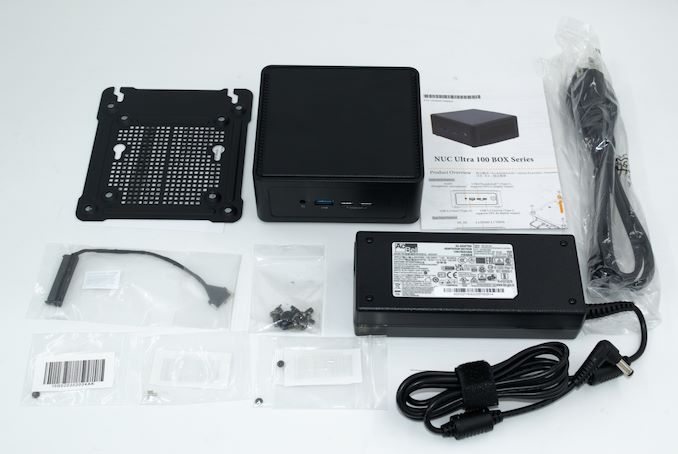








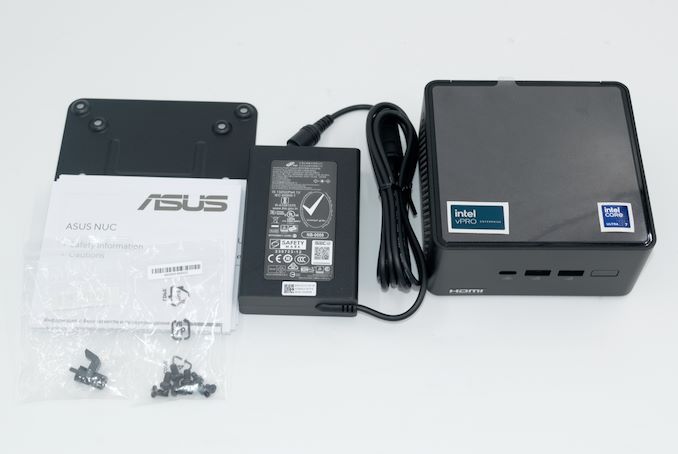
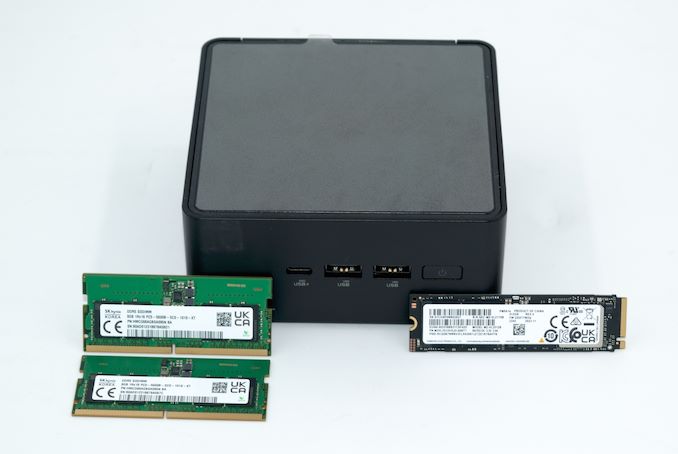
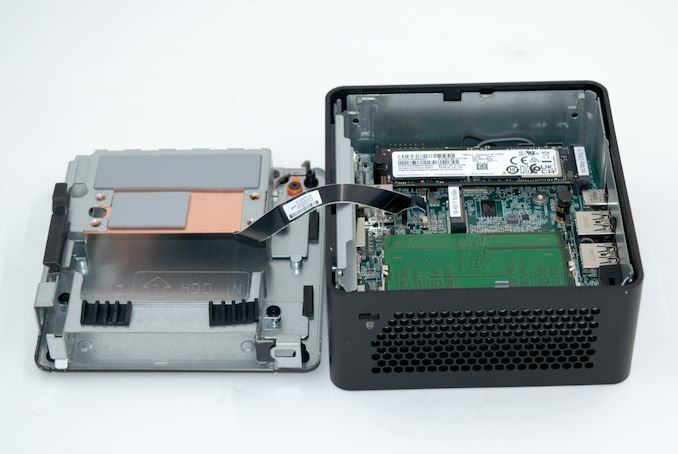








14 Comments
View All Comments
meacupla - Thursday, May 23, 2024 - link
I suspected it would work fine as a mini-PC.Asus' implementation hitting 100c under load is disappointing, but that's on Asus for not equipping it with adequate cooling.
shabby - Thursday, May 23, 2024 - link
Don't forget to blame intel for letting a mobile chip run at 115w.meacupla - Thursday, May 23, 2024 - link
With all the recent power limit and stability controversy, my money is on Asus being the worse offender. It's entirely up to the OEM if they want to use 115W or not.AsRock's implementation doesn't hit 100c.
shabby - Thursday, May 23, 2024 - link
Yes it does, keep reading further.TheinsanegamerN - Friday, May 24, 2024 - link
Intels reputation for being hot and slow continues unabated.James5mith - Thursday, May 23, 2024 - link
According to the color coding on the Jetstream graphs, Chrome/Edge were run on one of the NUCs, and Firefox on the other.You should probably try and keep those color codes consistent and matching what they are meant to match.
wr3zzz - Friday, May 24, 2024 - link
This is an example of there are no bad products, only bad prices.powerarmour - Sunday, May 26, 2024 - link
Oh there's definitely bad products too, like this.ionuts - Friday, May 24, 2024 - link
Why not use an USB-C PSU?TheinsanegamerN - Friday, May 24, 2024 - link
Because why would they when they have a ready supply of mini barrel power supplies?